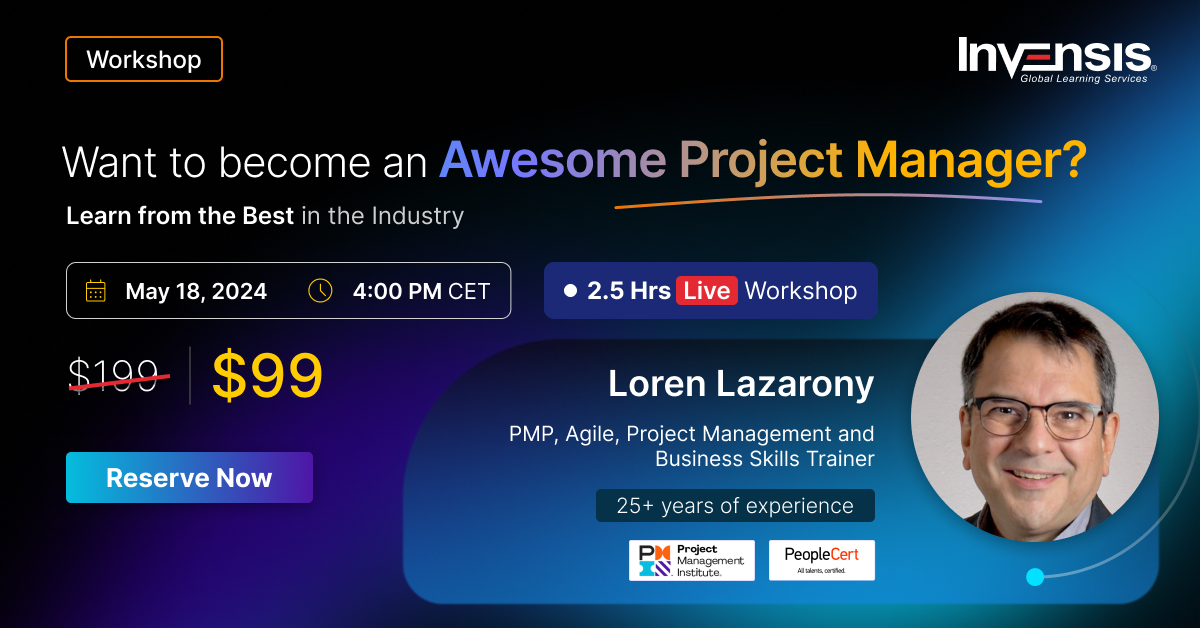Agile is a project management and software development methodology that prioritizes flexibility, collaboration, and customer satisfaction. Agile in AI (Artificial Intelligence) and Machine Learning (ML) Projects intends to describe a framework for rapid prototyping, iterative development, and close collaboration between developers, data scientists, and stakeholders.
Agile methodologies such as Scrum and Kanban are well suited to the highly iterative and data-driven nature of AI and ML projects, where the requirements may change frequently, and the development process involves a lot of experimentation and iteration.
By embracing Agile principles, teams can deliver AI and ML solutions that are more responsive to the changing needs of their stakeholders and have a higher chance of success.
Overview of AI and ML in Agile Project Management
Artificial Intelligence (AI) and Machine Learning (ML) are rapidly growing fields that greatly impact how businesses operate. For example, in Agile Project Management, AI and ML are often used to drive innovation and improve project outcomes.
Here are a few ways AI and ML can be incorporated into Agile projects:
- Automated Processes: AI and ML algorithms can automate repetitive and time-consuming tasks, freeing team members to focus on higher-value activities.
- Data Analysis: AI and ML can help teams analyze large amounts of data to identify trends, patterns, and insights that would be difficult or impossible to uncover manually.
- Predictive Analytics: AI and ML models can be used to make predictions about project outcomes based on historical data and current trends, which can help teams make informed decisions and identify areas for improvement.
- Continuous Improvement: By incorporating AI and ML into Agile processes, teams can continuously monitor and improve their performance, making adjustments and optimizations along the way.
By integrating AI and ML into Agile projects, teams can leverage the power of these technologies to drive innovation and continuously improve the quality of their work.
Also read the impact of Artificial Intelligence on Project Management and how it benefits Project Managers!
Agile Practices and Techniques Relevant to AI and ML Projects
Agile methodologies are a set of practices and techniques that prioritize flexibility and collaboration in software development projects. In the context of AI and ML projects, these practices can help teams effectively plan, build, and deliver high-quality models.
Some relevant Agile practices include:
- Iterative Development: In AI and ML projects, teams can use iterative development to build and improve models incrementally, testing and incorporating feedback.
- Cross-Functional Teams: Having a cross-functional team, including data scientists, software engineers, and stakeholders, can help ensure that everyone involved in the project has a shared understanding of goals and works together effectively.
- Continuous Integration and Continuous Deployment (CI/CD): These practices can help streamline the deployment of AI and ML models and ensure that models are updated and tested regularly.
- User Feedback: Incorporating user feedback into AI and ML models can help ensure that the models meet the users’ needs and deliver the intended results.
- Data-Driven Decision-Making: In AI and ML projects, teams can use data-driven decision-making to prioritize work and make decisions based on objective evidence rather than subjective opinions.
These Agile practices and techniques can be particularly relevant to AI and ML projects. By adopting these practices, teams can improve their work’s quality and efficiency while maintaining the flexibility and collaboration that are hallmarks of Agile methodologies.
Real-life Examples of Successful Implementation of Agile in AI and ML Projects
Here are a few real-life examples of successful AI and ML projects using Agile:
-
Healthcare
One of the biggest AI and ML projects in healthcare is IBM Watson Health, which uses natural language processing and machine learning algorithms to analyze patient data and provide treatment recommendations. IBM adopted an Agile development approach, allowing the team to iterate quickly and respond to changing needs in the healthcare industry.
-
Financial Services
JPMorgan Chase has adopted Agile methodologies for its AI and ML projects, including developing fraud detection and customer segmentation algorithms. Using Agile, the bank’s teams can work in short sprints and rapidly test and refine their models.
-
Retail
Walmart has used Agile methodologies to develop and implement AI and ML models in various parts of its business, including demand forecasting and personalized product recommendations. By using Agile, the company has been able to iterate quickly and respond to changing market conditions, ultimately leading to improved customer experiences and increased sales.
These are just a few examples of successful implementation of Agile in AI and ML projects. By adopting Agile practices, these organizations have improved their work speed and quality while allowing for greater collaboration and flexibility.
Best Practices for Implementing Agile in AI and ML projects
- Start with a clear goal: Clearly define what problem you are trying to solve and what you hope to achieve with AI/ML.
- Cross-functional teams: Assemble a team that includes individuals with diverse skill sets, including data scientists, software engineers, and business experts.
- Prioritize user feedback: Continuously solicit feedback from users to ensure that the solution meets their needs and makes a positive impact.
- Use iterative development: Build and refine the solution incrementally, starting with a minimum viable product and adding features over time.
- Embrace flexibility: Be prepared to pivot and make necessary changes based on new information or changing priorities.
- Foster a data-driven culture: Encourage the team to make decisions based on data rather than intuition or personal opinions.
- Continuously monitor performance: Use metrics to track the performance of the AI/ML solution and make improvements as needed.
- Encourage collaboration: Foster open communication and collaboration among team members.
- Automate testing: Use automated testing to ensure that the solution is functioning as intended and to catch issues early.
- Keep security in mind: Make security a top priority throughout the development process, from data collection to deployment.
By following these best practices, organizations can effectively implement agile methodologies in AI/ML projects and deliver high-quality solutions that meet users’ needs and drive business results.
Real-life Examples of Successful AI and ML Projects Using Agile Methodologies
Following are some of the real-life examples of successful AI and ML projects using Agile methodologies:
- Healthcare: One example is the development of an AI-powered diagnostic tool that helps doctors diagnose diseases quickly and accurately. This project was developed using Agile methodologies and has improved patient outcomes and reduced healthcare costs.
- Retail: An AI-powered personal shopping assistant that makes personalized product recommendations to customers based on their past purchases and browsing history. This project was developed using Agile methodologies and has increased sales and customer satisfaction for the retailer.
- Finance: An AI-powered fraud detection system for a large financial institution. This system was developed using Agile methodologies and has significantly reduced fraudulent activity and improved the security of customer accounts.
- Manufacturing: An AI-powered predictive maintenance system for a large manufacturing company. This system was developed using Agile methodologies and has improved machine uptime and reduced maintenance costs for the company.
Companies Implementing Agile in AI and ML Related Projects
Many companies are implementing Agile in AI and ML projects as it allows for a flexible and iterative approach to development. This allows for quick adaptations to changing requirements and more efficient deployment of AI/ML models. Some examples of companies using Agile in AI/ML projects are:
- Microsoft
- IBM
- Amazon
- Accenture
- Wipro
The methodology is well suited for AI/ML projects due to the nature of the technology and the need for rapid iteration and improvement. By using Agile, these companies can deliver high-quality AI/ML solutions that meet the changing needs of their customers.
How Does “Google” Implement Agile in AI and ML Projects?
Google has implemented AI and ML projects using agile by following a data-driven and iterative approach.
They prioritize customer needs and break down large projects into smaller, manageable sprints. This allows them to make changes based on feedback and test new ideas. The agile process helps Google to deliver high-quality AI and ML products that meet the needs of its customers.
Additionally, they use continuous integration and delivery practices to ensure that their models are deployed quickly and efficiently. Finally, they have a robust testing framework to ensure that their models perform as expected.
How Does “IBM” Implement Agile in their AI and ML Projects?
IBM uses agile methodologies, such as Scrum or Kanban, to implement it in AI and ML projects. These methodologies allow for a flexible and iterative approach to development, where requirements and solutions can be rapidly adjusted based on feedback from stakeholders and users.
IBM also leverages its extensive AI and ML expertise to ensure that projects are optimized for these technologies and incorporate best practices for ethical and responsible AI development.
Additionally, IBM uses various tools and platforms to support agile development, such as JIRA for project management, GitHub for code collaboration, and Watson Studio for data science and AI development.
Conclusion
Agile methodologies in AI and ML projects have proven to be highly effective in delivering results that meet the needs of stakeholders and users. The iterative and flexible approach of agile allows for rapid iteration and adaptation to changing requirements, ensuring that the final solution is tailored to the project’s specific needs.
By leveraging best practices for AI and ML development and utilizing tools and platforms specifically designed for these technologies, organizations like IBM, Microsoft, Google, etc., can efficiently and effectively implement Agile in AI and ML projects.
Ultimately, the combination of agile and AI/ML leads to the successful development of cutting-edge solutions that drive business growth and innovation.
Want to explore how agile and AI/ML can benefit each other? Then, you must take up our Agile Project Management training. Enroll now and understand the concepts better.
















